Avalon Place Plan: Let's ensure we can hear nature calling
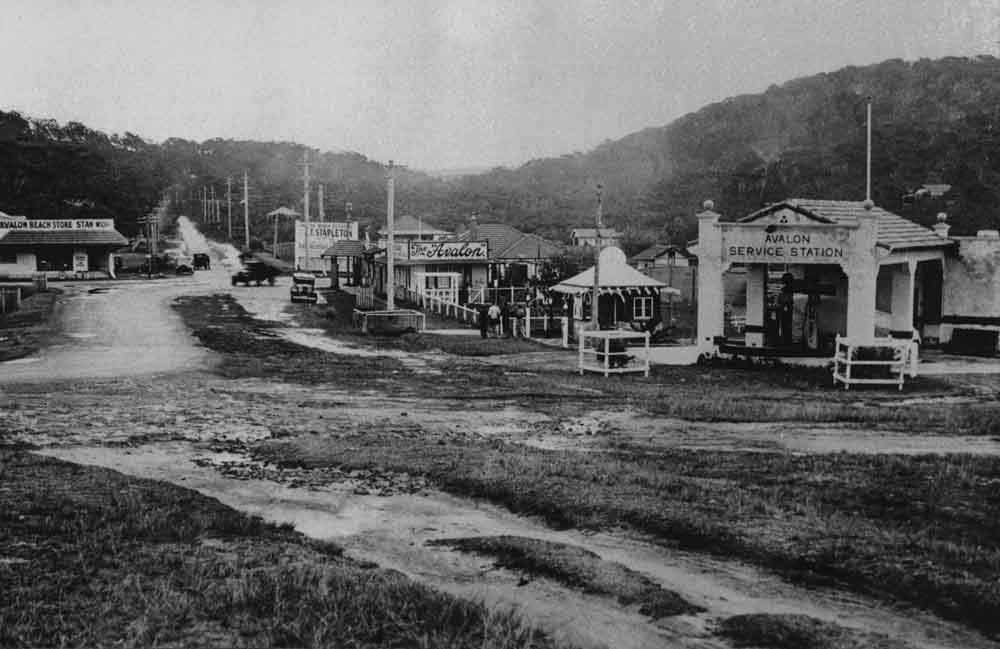
Standing in the centre of Avalon, with the low-lying village revealing green-cloaked hills rising to the north, south and west, feeling the ocean breeze on your face and hearing the waves breaking, is something most residents cherish. The banter of friends and neighbours on the street, kids chattering on their way home from school, and birds, from the bossy rainbow lorikeets to rarer tawny frogmouths in trees lining the roadway, bring life to the shops and cafes.
The question facing Avalon residents now is do we want this lovely, low-key village upgraded in line with plans provided by Northern Beaches Council in the Avalon Place Plan – either in full or in part – and if not, what do we want instead? With public consultation on the plan closing on May 16, the question has some urgency.
The plan was the focus of a public forum last Sunday (May 2) organised by local community volunteer Ros Marsh with support from residents’ groups and held at that most appropriate of Avalon venues, Green 1 at the Bowlo. With about 200 residents, sitting around the edges of the green and a line-up of local speakers including two eminent architects and the head of the new local business chamber, anyone listening would have been left in no doubt as to the community’s priorities.
The first of these was eloquently outlined by the internationally-renowned Professor Richard Leplastrier AO, whose architecture is rooted in the land on which his buildings are set. The professor advocated that we must understand and protect Avalon’s exquisite environment of which we’re now custodians, summarising this approach as “Nature comes first. Second comes culture.”
He explained to the crowd how the original indigenous occupants of Sydney had a deep understanding gained from their long association with the area. Yet, within 20 years, Sydney is likely to form one massive conurbation from Newcastle to Wollongong. But he believes the measure of a great city is all the small communities and diversity it encourages to flourish within it. Avalon is just one of those places on the Northern Beaches “with its own special essence”, he said.
“That’s why the wild side of Pittwater must be kept as wild as possible”, he said.
To do that, before any extra development takes place and more people come to live here, drawings should be made going back to the early times, showing geographic details such as where the creeks ran, location of Aboriginal tracks and stands of trees.
“If you don’t understand the original structure, how can you make interventions and changes that will actually belong there? Belong!” Mr Leplastrier said.
“That’s the way place works, it’s not about doing a set of drawings in council chambers that are a long way from here, by people who don’t live here. You have to get that underlay, drawing and information first.”
An example of this was Avalon’s water system, with Careel Creek connecting the village to Pittwater at Careel Bay.
“The waterway (is) still there - culverted, not thought through properly. You should be able to just ride your bike or walk beautifully all the way to Careel Bay and around the waterfront and back to here.”
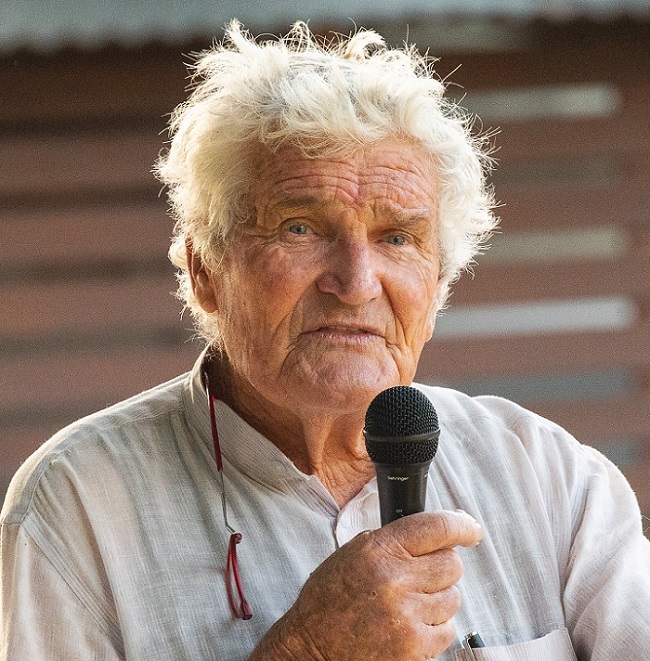
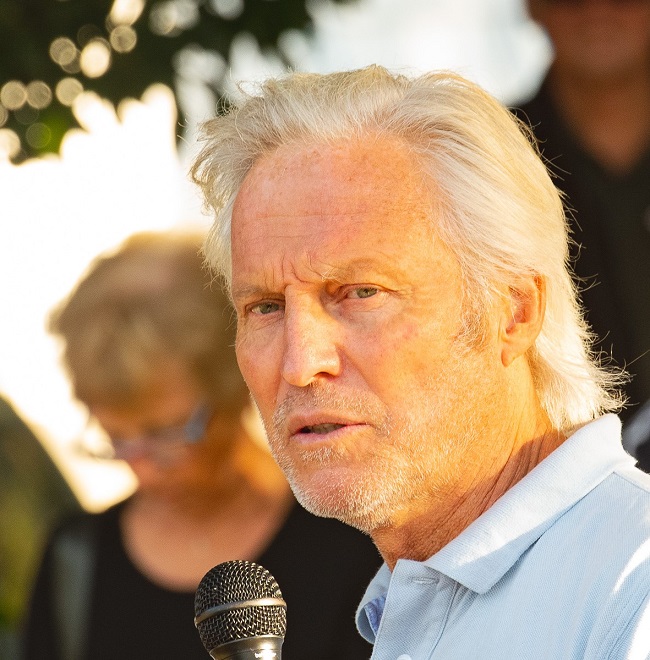
Professor Richard Leplastrier AO Peter Stutchbury
Peter Stutchbury, another award-winning local architect and environmentalist known for his commitment to sustainability in his work, also referred to the indigenous people’s impact on our local landscape. Mr Stutchbury described how the village’s current layout reflects the crossing of two tracks, one used constantly by the Aboriginal people leading from the beach to Pittwater, with a sacred place in Angophora Reserve. The other was established about 100 years ago by the white community, going down Newport hill, across the back of the lagoon there, and finally along where Old Barrenjoey Road is now. The centre of Avalon was created by the crossing of these two tracks.
At that time, the spotted gum forest wasn’t very prolific and the crossing point was heath land with low trees: “so things have changed”. The village started to develop with one to two storey buildings but about 40 years later the main thoroughfare was moved, from Old Barrenjoey Road to Barrenjoey Road, cutting the connection between the village and the beach.
“So no longer did we have that wonderful sense of access from the town to the beach and ever since that period we’ve made decisions that have been civil rather than aesthetic,” Mr Stutchbury told the crowd.
“... At the moment we’re all gathered here for a certain plan, but that certain plan has come from certain bad decisions along the way”.
Avalon had developed as a pedestrian centre, with wide boulevards which have now gone because of the perpendicular parking - losing two lanes of walking space. Mr Stutchbury noted that vehicles and their uses were changing anyway and cars were likely to be shared in the future. It therefore made sense to recover the boulevards by making parking parallel and consolidating it elsewhere.
In fact, pedestrians still dominated Avalon’s centre, he said, and suggested slowing down traffic to encourage walking, saying to applause: “Why don’t we make Avalon pedestrian friendly?”
”We just slow all the cars down so people can cross the road. There are alternative routes.”
He was not impressed with the plan for bike paths in Avalon and said: “I understand why we’re talking about bike paths but the reality is only people in the immediate area ride bicycles.
“I’m not sure how many people from the hills ride bicycles, quite frankly, and I think we should be talking about walking paths not bike paths,” he said to more applause from the audience.
He echoed Prof Leplastrier’s identification of Careel Creek’s importance, saying we should be making a serious effort to clean our waters. Before the creek was concreted in the 1960s to prevent flooding in Avalon, it was “pretty clean”.
“If it had been maintained as a creek, you can imagine what an asset it would have been to our community. We’d all be picnicking along there and walking along there,” he said.
“We’ve lost this wonderful sort of cultural vibrancy to the place by civilising it in a civic way - not in a country way.”
He also pointed to Avalon’s lack of a town centre, noting how the crossroads became the centre of town during Avalon Market Day.
Finally, he suggested that we should be planning for 20 or 50 years time: how to manage our carbon footprint - meaning how we manage development; how we manage our transport system - citing the example of some towns in France where residents park 10km out of the town and then use golf carts to reach the centre. And he was concerned about the failure to consider the impact of climate change in Avalon.
However, it wasn’t just architects who identified Avalon’s environment as a central concern to planning. Local business owner Nic Laidlaw talked about growing up in Avalon and how much he loves its natural environment and supportive community - as a young father of triplets.
“I was born into having the ocean on one side, all this bushland in between and then we’ve got Pittwater on the other side,” he said.
“It’s just like nature’s playground - and we never needed any instruction manual to use it. We didn’t need pathways or perfect, terraced hills leading us towards the beach. It was calling us.”
Describing this as “the essence of Avalon”, he said it wasn’t “extra concrete, it’s not too much construction”.
He called for the use of local artists work in the area and planning in harmony with the landscape. He also encouraged a respectful attitude to Aboriginal heritage in the area - including identifying traditional names - and for the council to take a cohesive approach to the place plan, consulting with the many knowledgeable and creative members of the community, from architects to athletes.
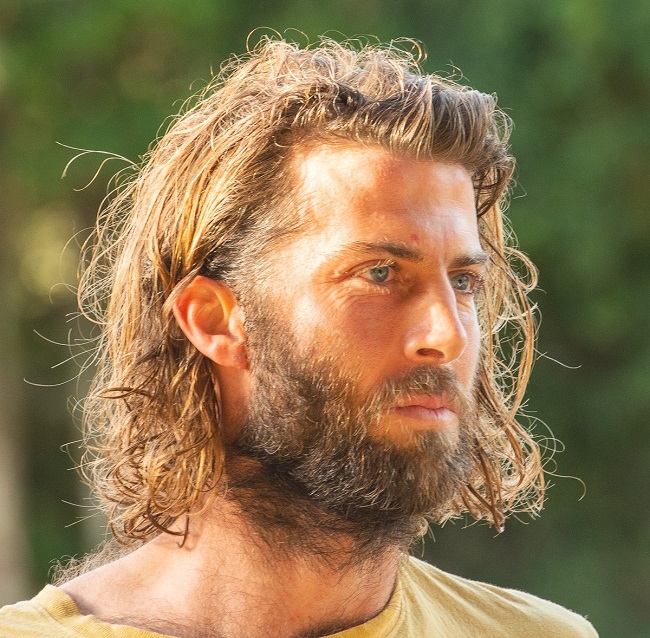
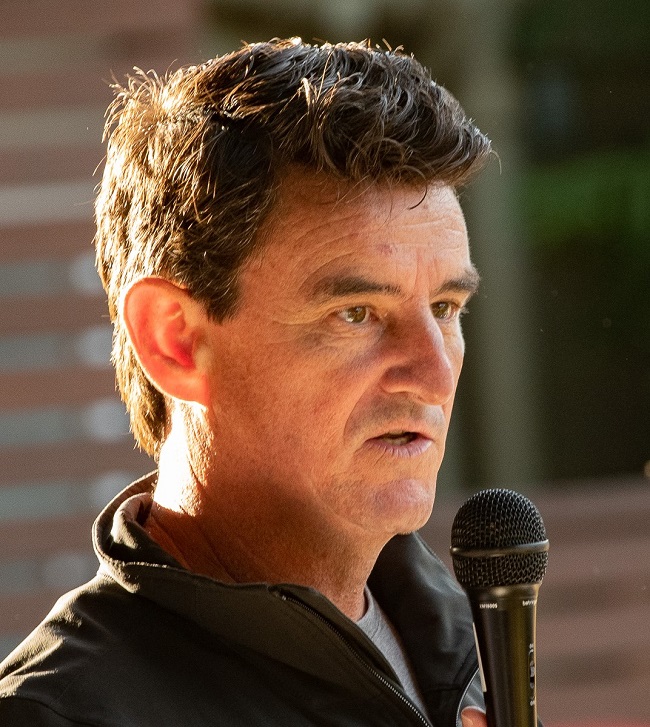
Nic Laidlaw Conrad Grayson
Similarly, Avalon Preservation Association’s Conrad Grayson, a landscape architect, described how the APA in a previous episode of place planning in 2016, had tried to identify what was unique about Avalon.
“We worked out it needs to include Avalon North, Careel Bay shops, Hilltop shops, Clareville, all the way up to Palm Beach because we realised that this is the local centre for people at Palm Beach as well,” Mr Grayson told the audience.
“What we were after was a cohesive community discussion, and wanted to have discussions like we’re having today rather than selected people in confidential discussions as has occurred.”
Mr Grayson listed a number of aspects of the plan that APA opposes.
“I doubt many of you are here to support the CBD-style cycleway, carving through the pedestrian village and in the process demolishing those mature trees, that by my estimates, being a landscape architect, would be 60-years-of-age, ” he said.
He also doubted many would support proposed changes to Dunbar Park, including poorly-located performance platforms, BBQs, and seating. Nor the beachside upgrades, “including generic sandstone walling overlooking Barrenjoey Road”.
“APA supports the vision presented in this document,” he said.
“The vision is a good piece of work - it talks about a relaxed, peaceful, vibrant coastal village, nurturing the natural environment, celebrating creativity and community connection.”
In line with these four principles, Mr Grayson said APA supported: the activation of laneways: resurfacing of footpaths with pavers - not just 600ml by 400ml granite pavers but something that was interesting and that ”breaks down the scale”; atmosphere lighting (not security lighting); and the proposed trial of the shared road and pedestrian way on Old Barrenjoey Road near the community centre.
Mr Grayson also called for a dedicated budget for the place plan works, with a fixed timeframe of two to three years, “to make sure we move away from incremental, ad hoc, bandaid building works and short- sighted programs”.
By contrast, Chris Kavanagh, who spoke as president of the newly-established Peninsula Business (formed from the merger of the former Avalon Palm Beach Business Chamber, Newport and Mona Vale Chambers of Commerce) took a more pragmatic approach.
“The commerce in this village depends very much on itinerant visitors,” Mr Kavanagh said.
“We all enjoy the local businesses here but a lot of them wouldn’t be here if it wasn’t for the visitors we get on weekends, who come and stay overnight or come and stay for the day.”
Mr Kavanagh noted that most visitors come by car so that it’s important to maintain parking in the area. Avalon’s ambience was what attracted visitors, with its trees and the wide streets.
“It’s open, it’s friendly and it’s appealing. It’s inclusive,” he said.
“If you put a bike path down the middle of Avalon, you’re effectively dividing the village in two, or in three or even four. You’re not making it inclusive. So don’t dissect Avalon.”
He was also concerned about cyclists travelling at 50kph through the centre of the village - making it more difficult and potentially unsafe for residents to cross the road. And rather than cutting down trees - as would be required for the bike path - Mr Kavanagh said we should be planting more.
Finally, changing traffic flow - created by the shared vehicle and pedestrian area - would reduce the number of loading zones for couriers, which local commerce depended on, he said.
Also opposed to the council’s plan for a cycleway was the event’s organiser Ros Marsh. The plan for the bike path was not community-driven - not having come from any community reference groups - and the three residents’ associations thought it was the wrong plan for Avalon, she said.
“It’s not pedestrian friendly, it’s not slow; it’s not safe for pedestrians, the bike riders, for car users, and frankly we’re asking people to rally round and say ‘Please take that off the table’,” Ms Marsh said.
“We don’t want it as part of the draft plan, even if it’s down the bottom of the list.”
Ms Marsh described in detail the route for the bike path, running along Avalon Parade, but said the council’s plans for it kept changing. Instead she said residents’ groups had discussed taking a bike path along Avalon’s laneways - Patterson and Edmund Hock - school students could travel at slower speeds away from the traffic.
She was also critical of the plan to remove part of the hillside at the entrance to Avalon Beach in a “massive excavation”, to reduce congestion at the bus stop near the traffic lights. More concrete and terracing on the site would create a “concrete coliseum so you can sit and look at the service station while you wait for the bus”, she said.
“So we said, ‘Not really Avalon, do we really need to do that?’,” she told the crowd.
Instead she and other residents suggested opening up space by moving the bus stop further north.
“What council should have done was a really high quality traffic study, by an independent traffic engineer, of the whole of Avalon before they started all these changes and bits and pieces,” she said, noting that the last traffic study in Avalon had been carried out in April, 1994.
Ms Marsh’s top priorities for Avalon were straightforward: resurfacing footpaths; ambient lighting; and retaining the tree canopy.
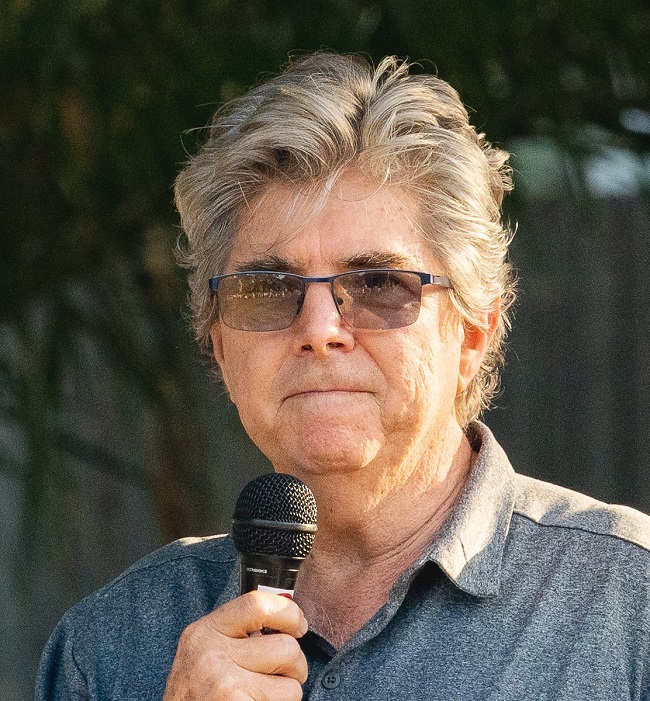
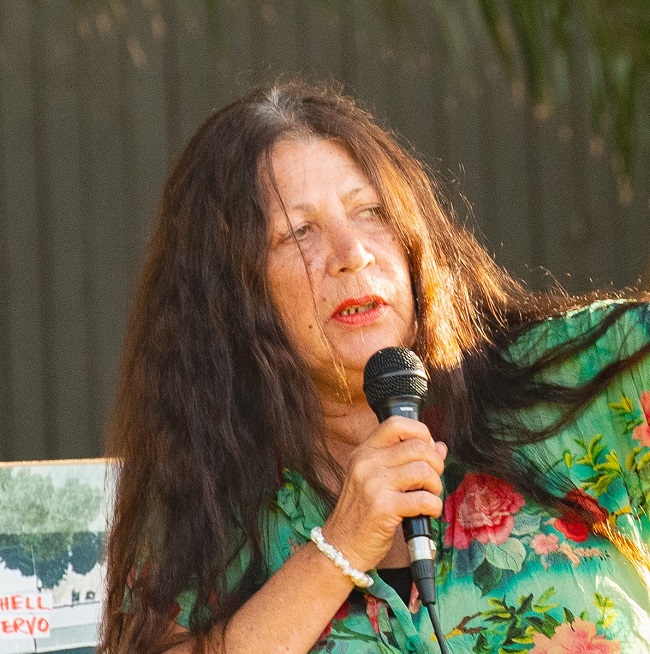
Chris Kavanagh Ros Marsh
CABPRA’s (Clareville and Bilgola Plateau Residents Association) president Catherine Kerr, encouraged residents to make submissions on the Place Plan, suggesting whatever “quirky” ideas they had - and noting that you don’t have to respond to the whole document. It as also important that trees, both native and exotic, were protected under the plan, she said.
PBWBA’s (Palm Beach and Whale Beach Residents Association) Frank Bush had a longer wish list, including opposition to the cycleway plan. However, his group supported APA’s idea of bike riders using Avalon’s laneways. These should be opened up for wider use by the community, he said. Resurfacing footpaths was also a priority for his group, because of the trip hazards so prevalent on them throughout Avalon. Repairs to roadways were also essential.
However, the failure to stipulate height limits in the village was a serious omission and Avalon’s old buildings should be protected, Mr Bush said. Covid-19 had reinforced how Avalon had a “destination economy” and the council should find ways to support that too.
Pittwater Councillor Alex McTaggart, who chaired the meeting, described Avalon as “a particularly special place”. He noted that the place plan would bring about the biggest change in the village in 50 years, and encouraged all residents and community groups to lobby the council for what we want. Perhaps he summarised the feelings of most of us there, saying: “The built form should not dominate the environment.” Let’s hope he can convince his colleagues on council - as well as its staff - to listen to the community - so that future generations are able to live amongst the trees in this beachside haven.
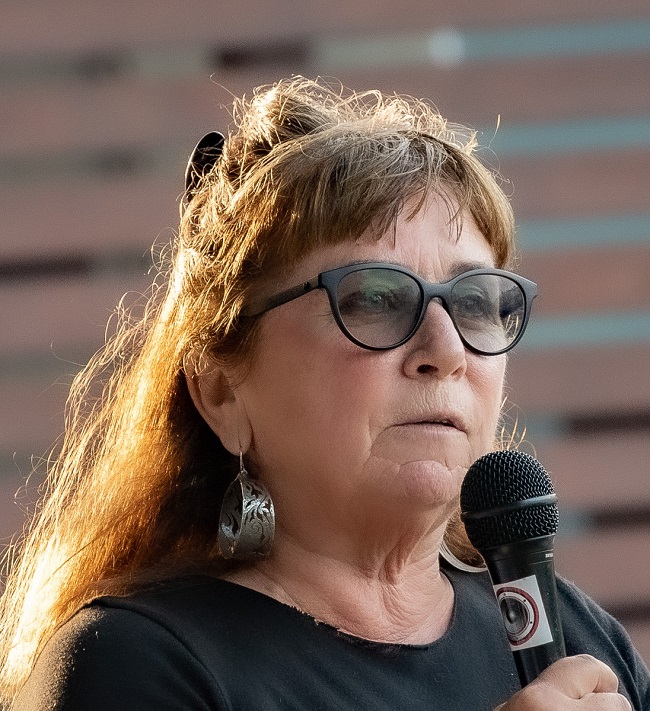
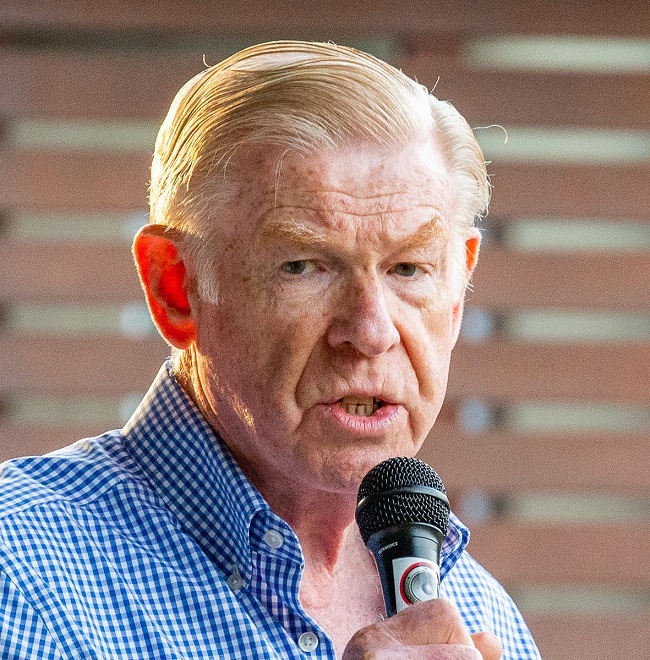
Catherine Kerr Frank Bush AM
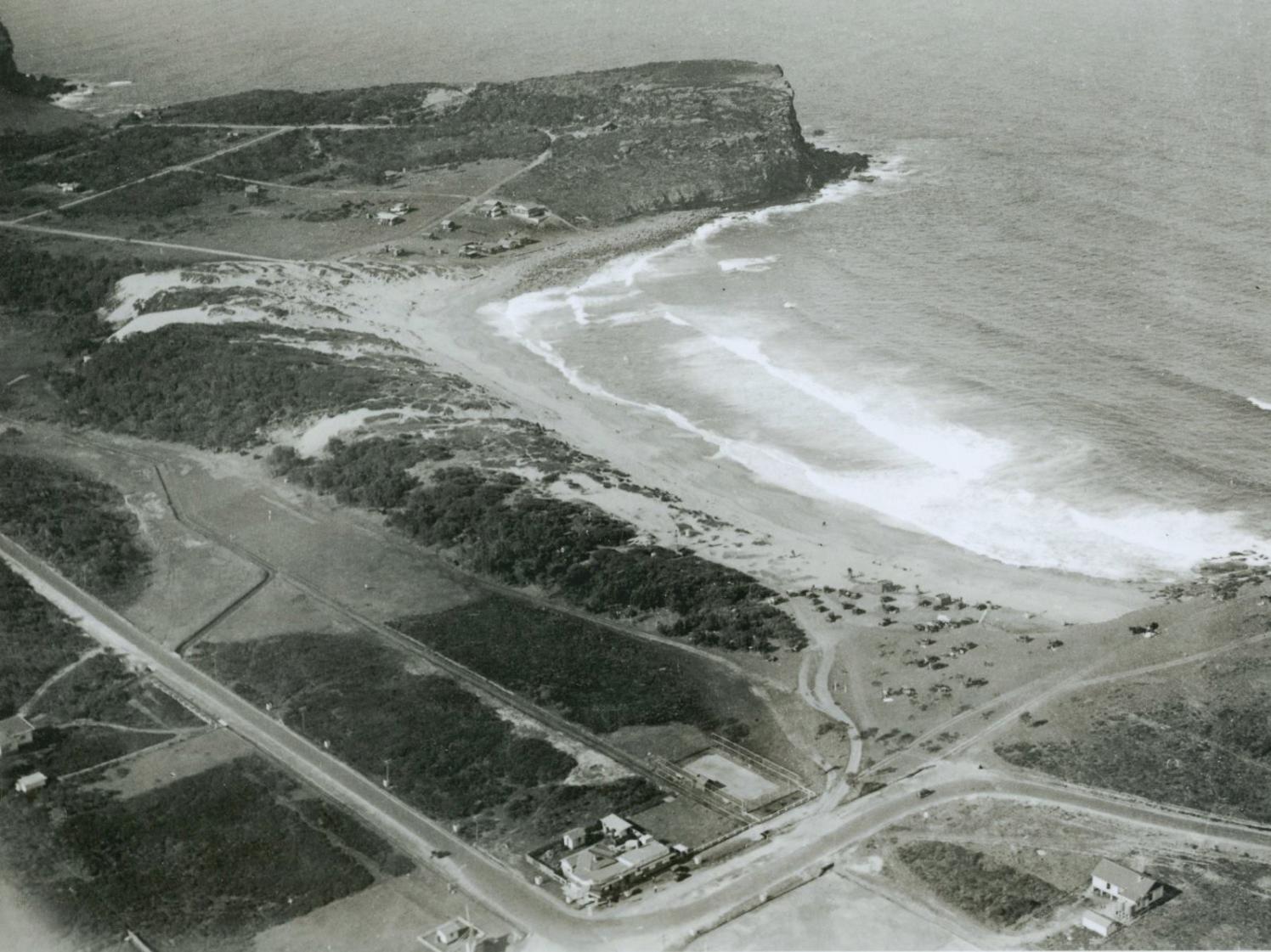
Avalon Aerial View 1928 - ABHS Photo
The general store at that stage would have still been run by the Wickhams and then later by Theo Aroney and last was Le Clerq before it was demolished in 1964 to make way for the Barefoot Boulevard which these days is Woollies. The tennis court lasted for a few more years and then the mini-golf "Ava-putt' was built next door to the east and it was then replaced by the Shell servo. in 1934. The surf club was still 6 years away but you can just spot the 2 dressing sheds almost on the beach near the cars. North Av. is still pretty barren. Geoff SearlOAM.